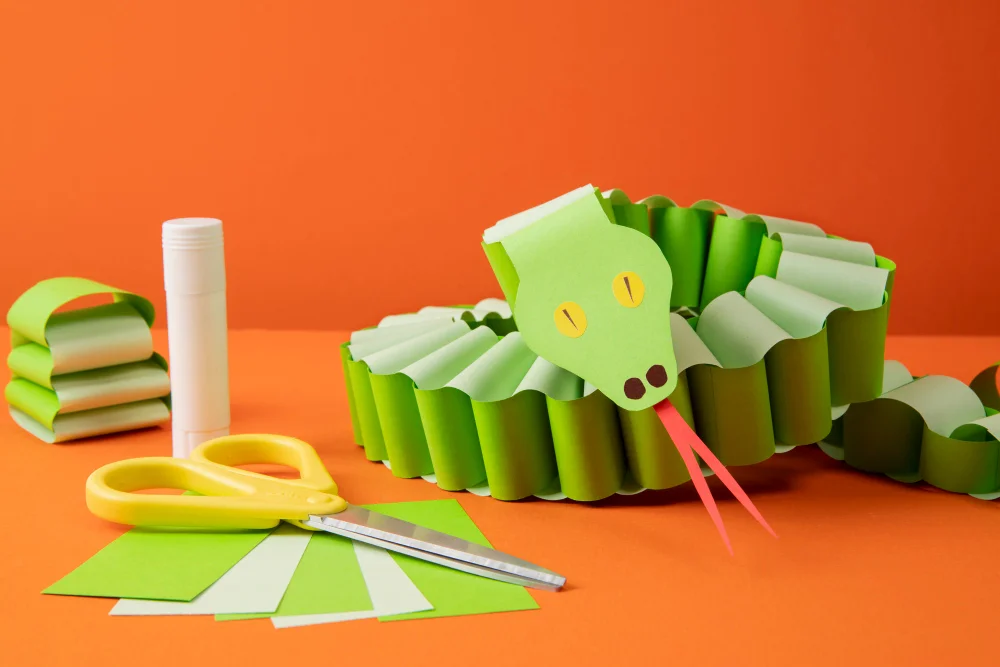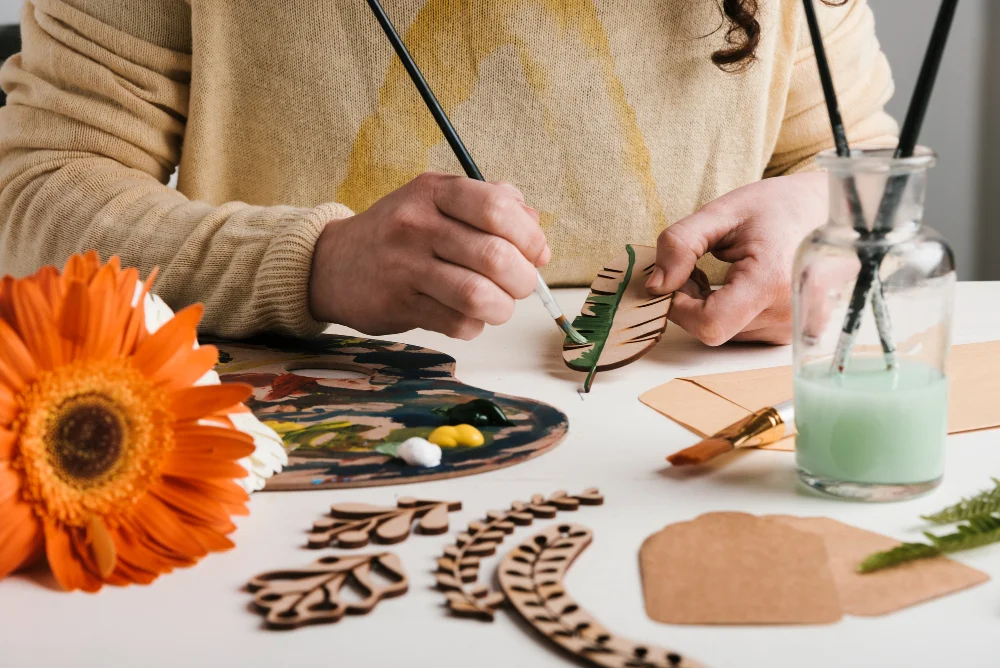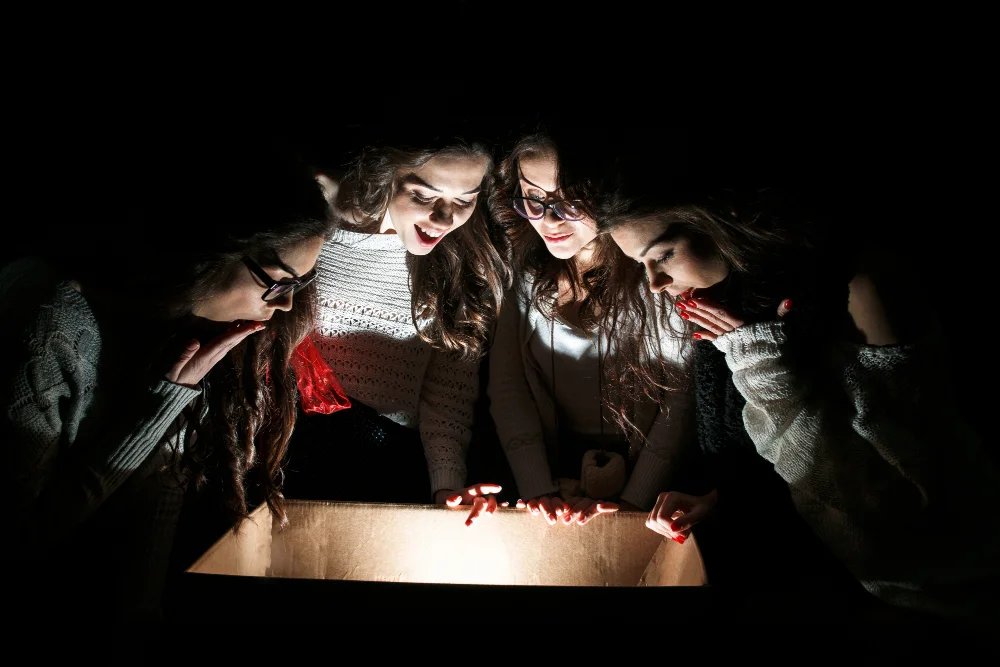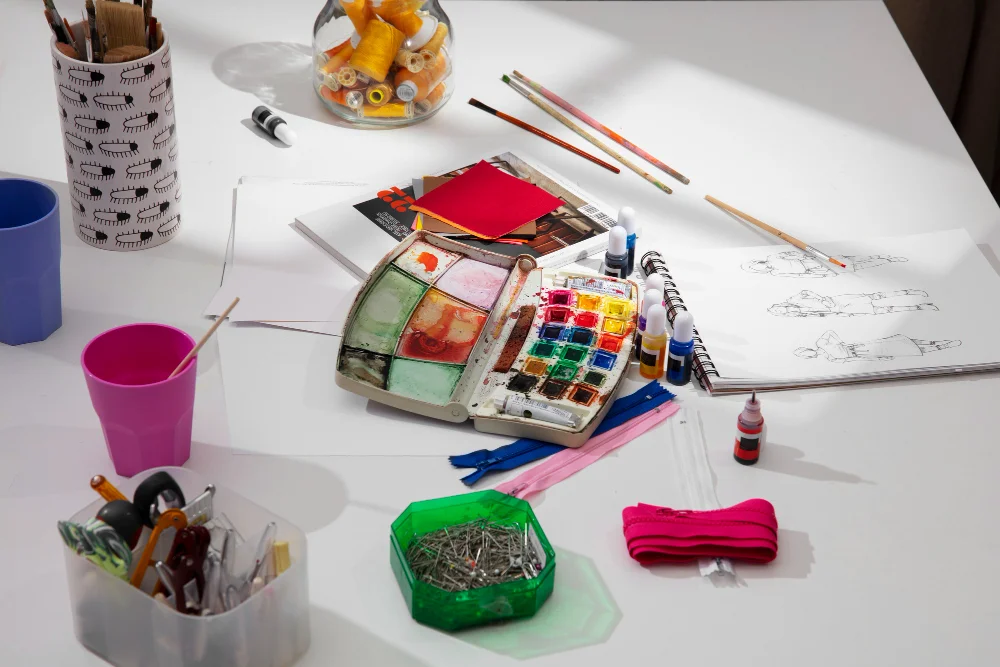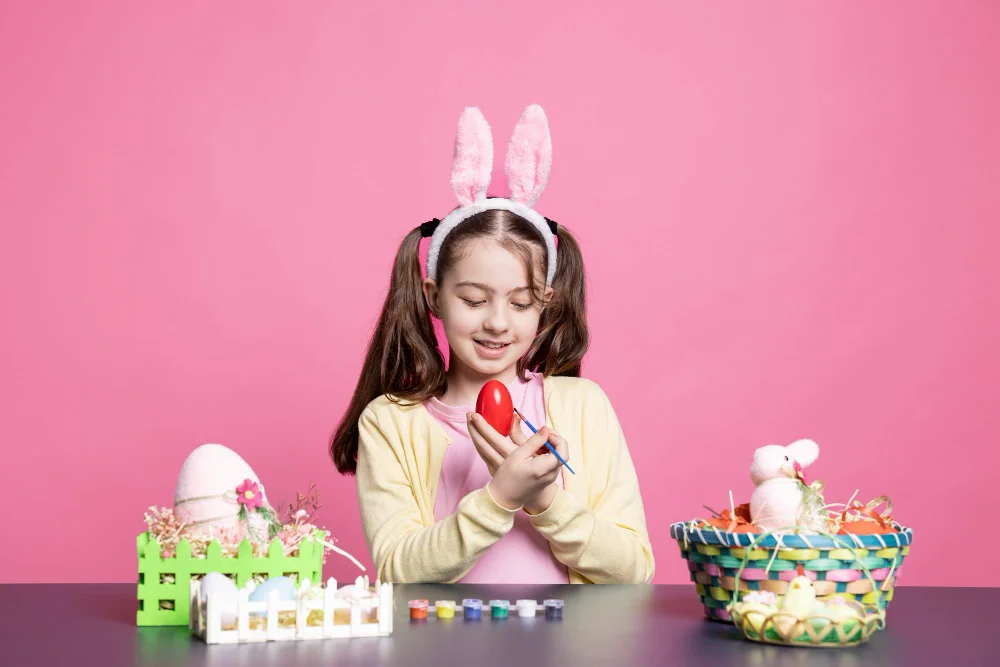Children’s logic puzzles do not merely entertain; they build essential thinking skills. From early childhood, when kids are asking “why” about everything, puzzles nurture their curiosity, help them learn pattern recognition, and teach them to reason step by step. Introducing logic challenges early gives them a foundation in critical thinking that will benefit them in school and beyond.
Furthermore, logic puzzles create a low-stakes environment for failure and retrying. A child can make a “wrong move,” see why it fails, and try again, fostering resilience, patience, and a growth mindset. When framed as a playful challenge rather than a test, these puzzles also encourage perseverance and a positive relationship with problem-solving.
Types of Children’s Logic Puzzles
In this section, I explain two common types of puzzles, then two more, blending explanation and examples.
Grid / Deduction Puzzles
These puzzles provide a grid (rows and columns) and a set of clues. The child must use elimination and deduction to determine the correct relationships (for example, matching pets to owners, or colours to houses).
Because the grid organizes possibilities, children learn to systematically rule out options.
- Example: “Maria does not have the dog. The red house is not by the park. Who owns the bird?”
- More advanced: multiple attributes (colour, pet, snack) must all be matched without conflicts.
Sequence & Pattern Puzzles
These challenge kids to find the next shape, number, or symbol in a sequence by discerning the underlying rule (e.g. “circle, square, triangle, circle, square, ___”).
Children sharpen their ability to spot patterns, spot exceptions, and think ahead.
More Puzzle Varieties To Try: Children’s Logic Puzzles
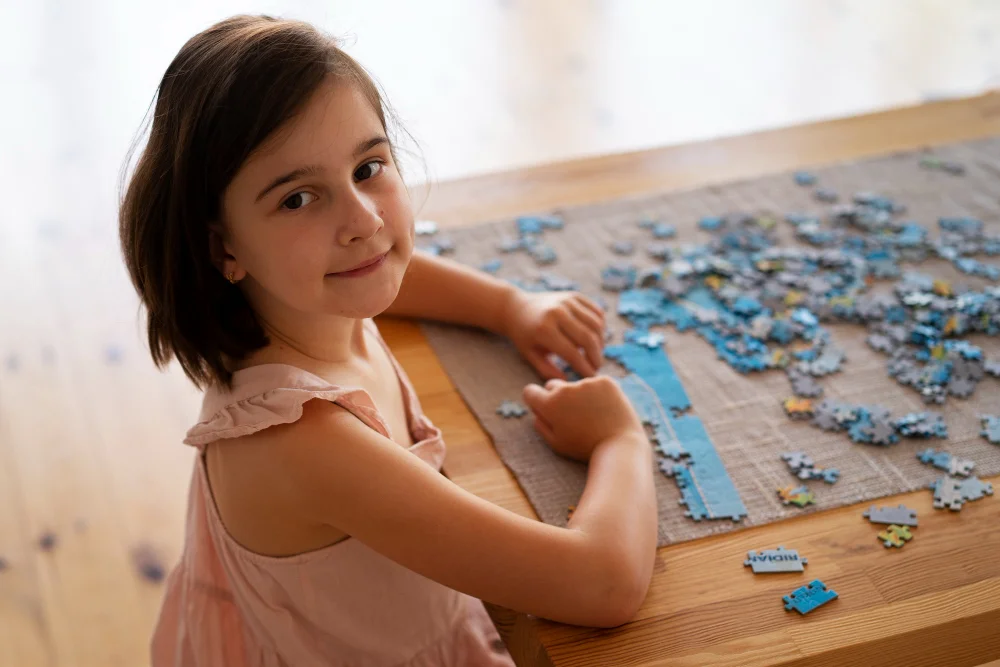
Here are two additional categories, each with a short paragraph, then bullet examples:
Logic puzzles expand beyond grids and sequences. Adding visual or spatial elements makes them more engaging.
Puzzle Types
- Spatial / Visual Logic Puzzles: These involve shapes, rotations, mirror images, or block arrangements (for instance, tangrams or “which shape fits next” puzzles).
- Riddle & Verbal Logic Puzzles: These use short word puzzles or detective-style clues (e.g. “The cat is not on the left of the dog. The mouse is not on the right. Where is the cat?”).
Examples / puzzle ideas:
- Find the odd one out in a set of shapes
- Mirror-image puzzles where a shape must be flipped to match
- Simple “who did what” mysteries with 3 or 4 clues
- Fill in the missing piece in a patterned grid
These additional types complement grid puzzles and help children reason in different modes (visual, verbal, spatial).
How to Introduce Logic Puzzles to Children
First, start with the very easiest puzzles, maybe 2×2 grids or simple pattern recognition, so that the child experiences success and gains confidence. Walk them through solving one together, verbalising each thought: “Because A cannot go here, it must go there,” or “This shape is different, so the next one must match the first.”
Encourage them to think aloud. Over time, gradually increase the difficulty (3×3 grids, more clues, more possibilities), but only when the child is comfortable. Next, incorporate logic puzzles into daily life. Use them as short “brain breaks” between other tasks, or offer them as fun challenges at bedtime.
Provide a mix so the same type doesn’t get boring. Also, ask children to create their own puzzles for you or their peers designing them deepens their understanding. Celebrate the creative or elegant puzzles they make, even if imperfect.
Benefits & Skills Developed of Children’s Logic Puzzles
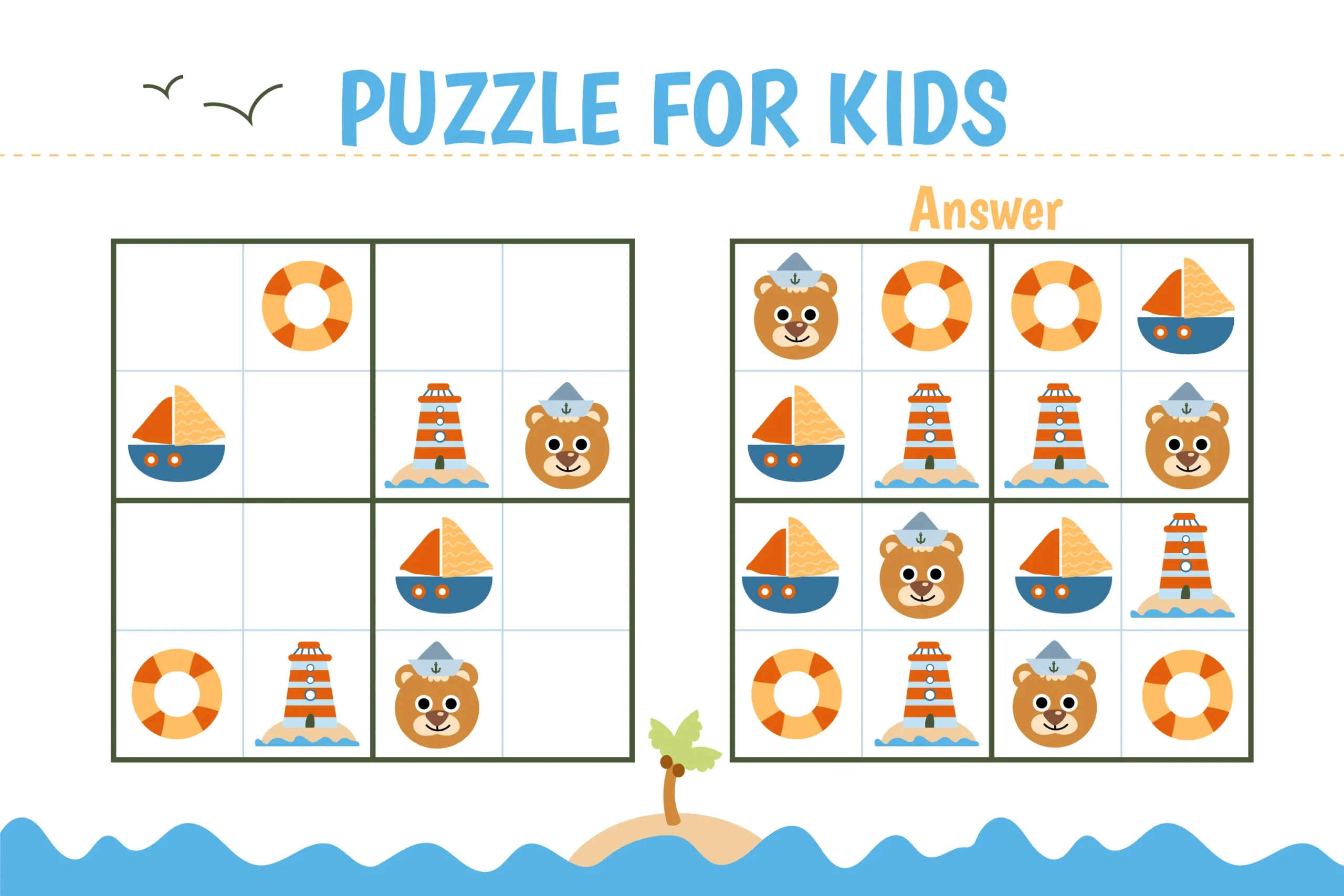
Logic puzzles strengthen critical thinking, reasoning, and inference. Kids learn to go from clues to conclusions, practising deductive logic. These skills carry over to math, science, reading comprehension, and even everyday decision-making. As they solve more puzzles, they begin seeing hidden relationships and thinking two steps ahead.
Additionally, logic puzzles nurture focus, attention to detail, and cognitive flexibility. A child has to keep track of multiple constraints, revise assumptions, and backtrack when a path fails. This kind of mental agility supports overall cognitive development, better concentration, and improved ability to manage complexity in school tasks.
Later, as they grow, logic puzzles also promote metacognitive awareness (thinking about how they think). They become more self-aware of strategies: “If this clue implies X, check that branch first,” or “I should eliminate impossible options first.” This kind of strategic thinking is rare but powerful.
How to Pick & Adapt Logic Puzzles for Your Child
Choosing the right puzzle for your child is as important as offering them in the first place. Here’s how to tailor puzzles to age and ability.
Begin by assessing the child’s current reasoning level. If they struggle to keep two clues in mind, start with puzzles that require only one or two deductions. Use visual supports, colouring the grid, using tokens or counters, to make abstract relationships concrete. Always ensure that mistakes are non-judgmental opportunities; don’t make solving feel like a test.
As they improve, challenge them gradually. Increase the number of possible options, mix attributes (e.g. colour + animal + object), or introduce some red herrings (clues that mislead temporarily). Encourage them to explain their thinking; asking “why did you eliminate that?” fosters deeper reflection.
Also, adapt the puzzles to your child’s interests so they feel more motivated. If they love animals, make logic puzzles about pets; if they like space, make puzzles about planets and rockets. Over time, let them design puzzles for siblings or friends, reversing roles so they are creators, not just solvers.
Quick adaptation tips:
- Use 2×2 grids for very young children
- Use tokens, counters, or colored pens to mark possibilities
- Offer puzzles with familiar topics (animals, foods, friends)
- Introduce hints (e.g. “One clue overrides another”)
- Let children self-pace if frustrated, pause and resume later
Practical Ideas & Sample Puzzles to Try
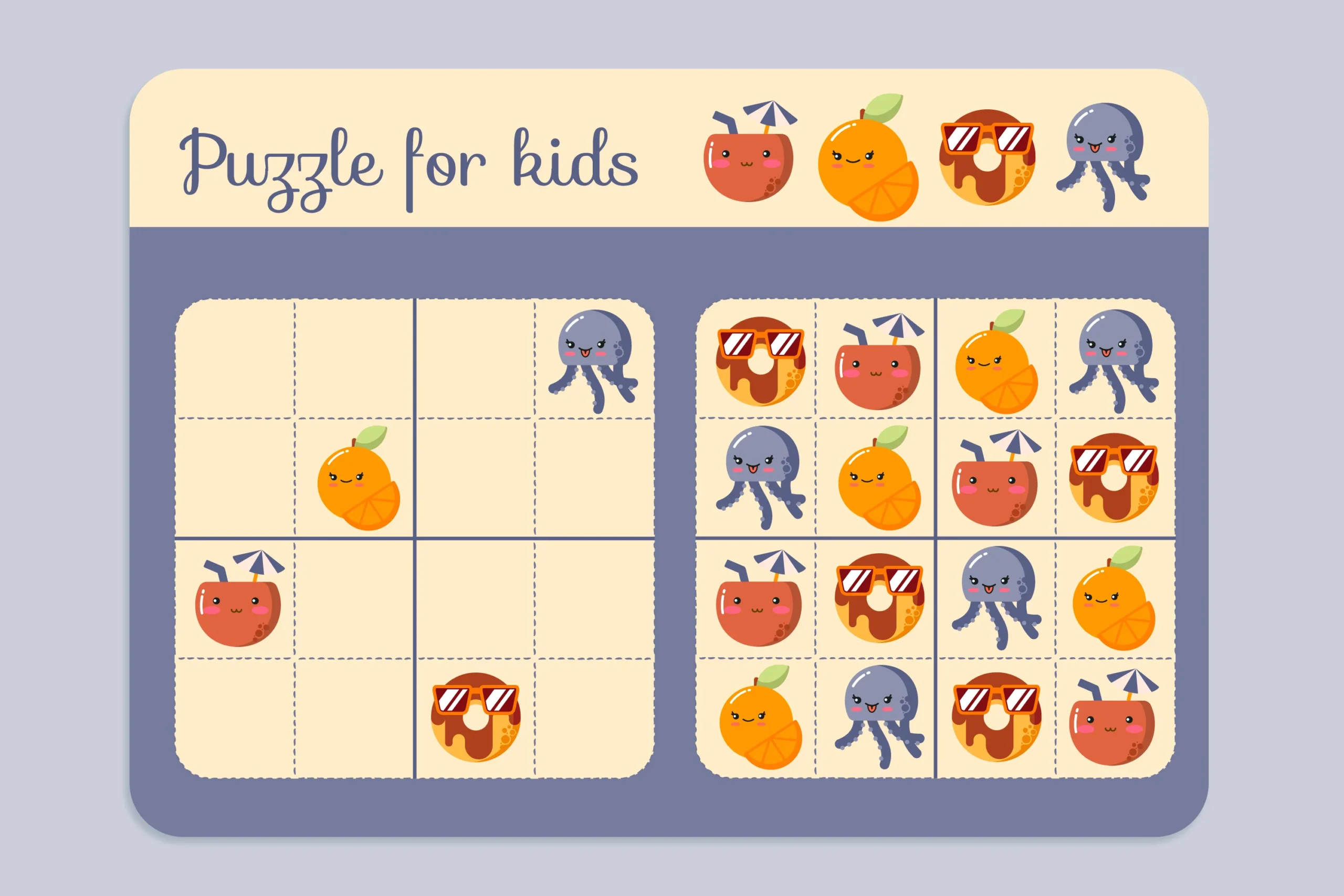
Children learn best when puzzles are fun, quick, and varied. These activities take only a few minutes but provide a steady boost to reasoning, focus, and problem-solving skills. Below are 20 ready-to-use puzzle ideas that you can try at home, in class, or during playtime.
Sample Puzzle Ideas
-
Mini Grid Mystery – A 3×3 grid with three kids, pets, and snacks. Provide 3–4 clues to match them correctly.
-
Pattern Sequence – Show ★ ▲ ★ ▲ ? and ask what comes next.
-
Visual Shape Rotation – Rotate a square and ask which option matches its mirror image.
-
Verbal Logic Riddle – “Tom is taller than Anna, Anna is taller than Sam. Who is shortest?”
-
Design-Your-Own Puzzle – Ask your child to create three clues for you to solve.
-
Odd One Out – Present four animals (dog, cat, fish, apple) and ask which doesn’t belong.
-
Number Ladder – Show 2, 4, 6, ?, 10 and ask for the missing number.
-
Colour Match Puzzle – “The person in the red shirt does not have the kite. The child with the kite is not wearing blue. Who has the kite?”
-
Family Picnic Puzzle – Three families bring juice, sandwiches, and fruit. Give hints about who brought what and askthe kids to solve.
-
Clock Puzzle – Show times on clocks (2:00, 4:00, 6:00, ?) and ask what comes next.
-
Animal Homes Puzzle – Match bird, dog, and fish to nest, kennel, and bowl using three short clues.
-
Shape Builder – Give pieces of a tangram set and ask kids to form a square or animal figure.
-
Yes/No Riddle – “I am thinking of a number. It’s greater than 5, less than 10, and even. What is it?”
-
Magic Box Puzzle – A 2×2 box with numbers; the pattern is adding two sides to get the opposite. Ask the missing value.
-
Treasure Hunt Clues – “The treasure is not in the red box. It is not next to the yellow box. Which box has it?”
-
Food Logic Puzzle – Three friends eat pizza, pasta, and salad. Clues decide who eats what.
-
Direction Puzzle – “If you face north, turn right, then left, then right again, which way do you face?”
-
Seating Arrangement – “Sam sits to the left of Amy, Amy sits next to Ben. Who sits in the middle?”
-
Missing Picture – Show a sequence of shapes with one blank space; ask kids to pick the missing one.
-
Birthday Puzzle – Three kids have birthdays in March, June, and December. Give 2 clues to find who was born when.21
-
Mini Grid Mystery – Use a 3×3 grid with three children, three pets, and three favourite fruits. Give 3–4 clues. Ask the child to fill the grid.22
-
Pattern Sequence – Show: ★ ▲ ★ ▲ ? Ask: What comes next? (Answer: ★ again or pattern continues)
-
Visual Shape Rotation – Show a shape rotated, and ask which choice is its mirror image.
-
Verbal Logic Riddle – “Lisa is not riding the red bike. The blue bike is heavier than the green. Whose bike is red?” etc.
-
Design-Your-Own Puzzle – Let your child write 3 clues and challenge you or a sibling to solve.
These puzzles only take 5–10 minutes, but gradually build logic stamina and delight.
Summary & Final Thoughts
Children’s logic puzzles are not just fun activities; they are stepping stones toward building sharper minds and resilient problem solvers. By encouraging kids to explore patterns, sequences, and deduction, parents and teachers can nurture essential skills early. When puzzles are playful and engaging, children develop focus, patience, and a love for problem-solving.
The true power of logic puzzles lies in their ability to blend learning with enjoyment. Whether through grids, riddles, or visual challenges, these activities prepare children for academic success and real-world reasoning. With the right guidance and creativity, puzzles become more than games; they transform into tools for lifelong learning.
